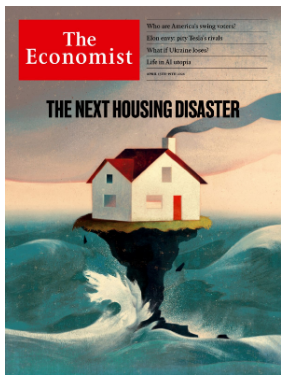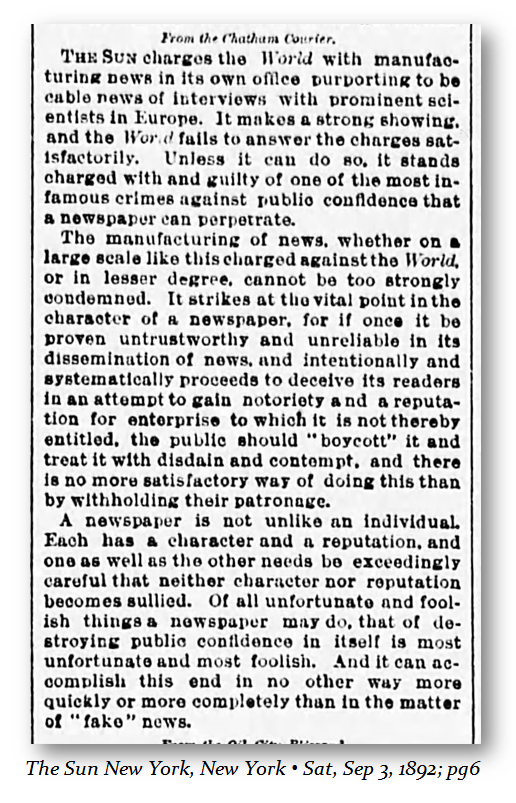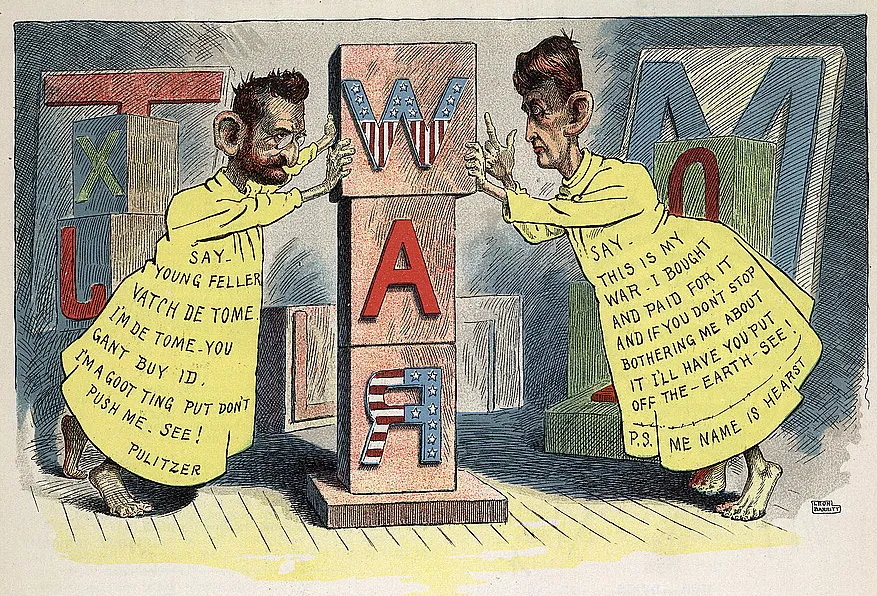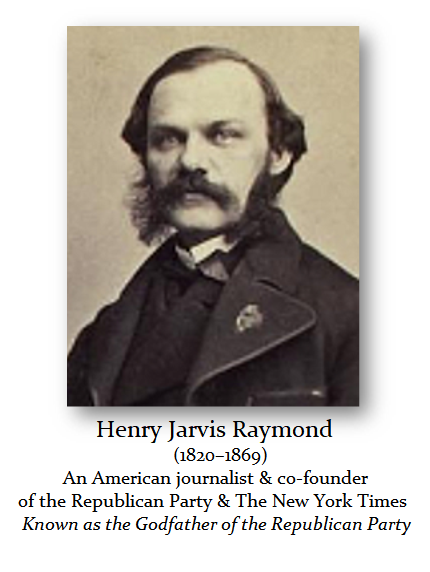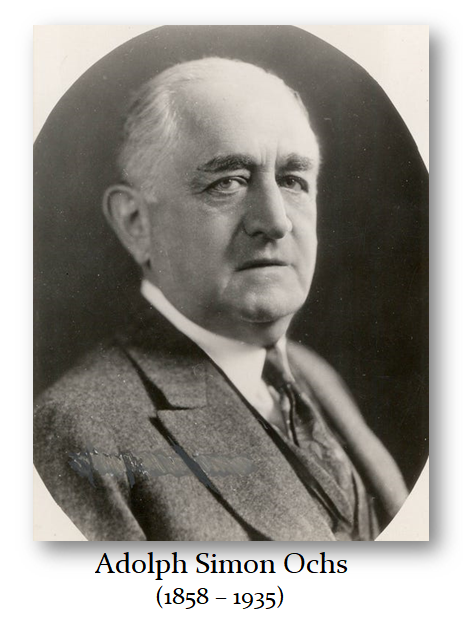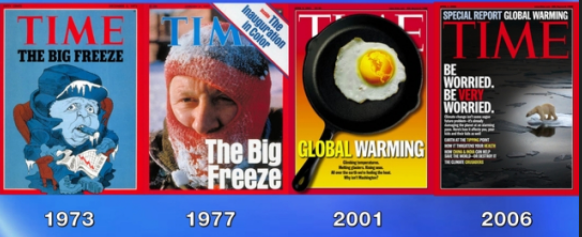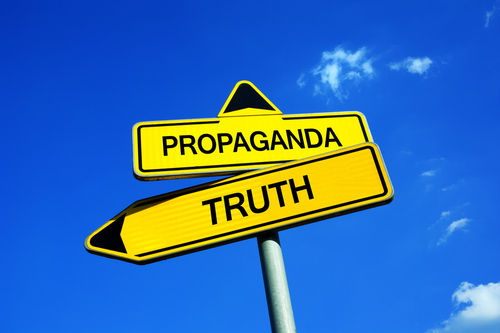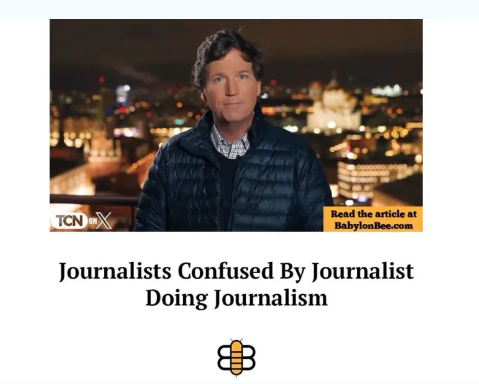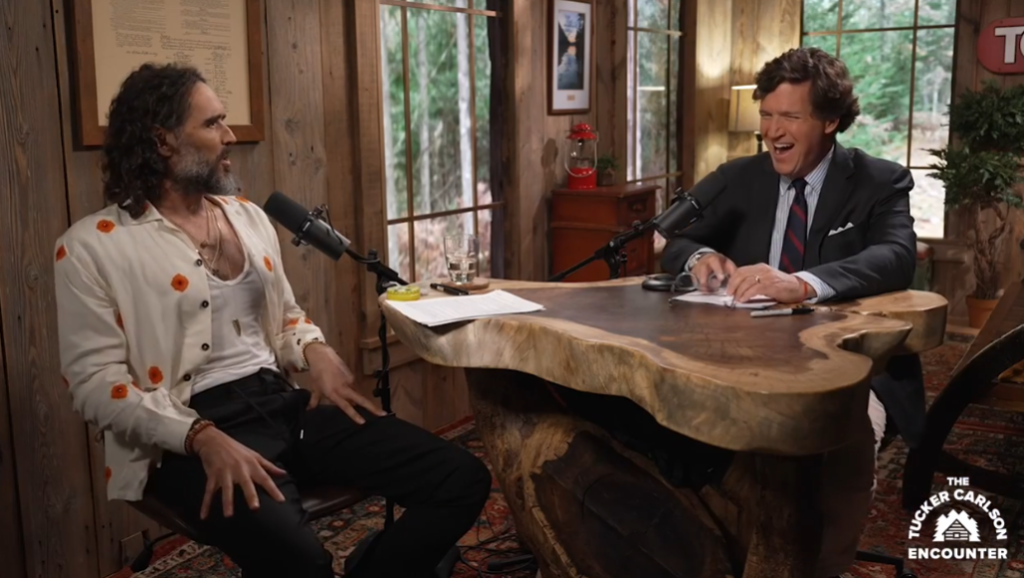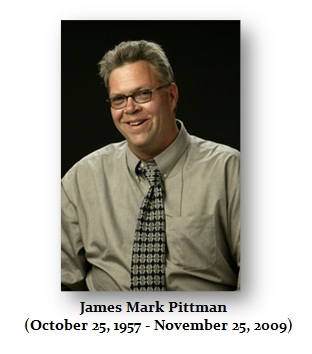The Economist’s editor-in-chief, Zanny Minton Beddoes, wrote that global warming would damage a tenth of the world’s residential property by value. They reported that this includes “many houses that are nowhere near the coast. From tornadoes battering Midwestern American suburbs to tennis-ball-size hailstones smashing the roofs of Italian villas, the severe weather brought about by greenhouse-gas emissions is shaking the foundations of the world’s most important asset class.”
Once upon a time, the Economist was a respected magazine. Today, there is no point in advertising there because, clearly, the people who believe these articles are brainwashed and hopeless unless you are pitching green investments that always lose money. Can you imagine that now 10% of all real estate will be damaged by global warming?
The entire problem has infected the media for centuries. Donald Trump did not suddenly invent Fake News. Here is an article from the New York Sun published on September 3rd, 1892. The Sun charged its competitor, the New York World, with “manufacturing news in its own office purporting to be cable news of interviews with prominent scientists in Europe.” The article states it cannot be condemned for it “strikes at the vital point in the character of a newspaper… Of all unfortunate and foolish things a newspaper may do, that of destroying public confidence in itself is most unfortunate and most foolish, and it can accomplish this end in no other way more quickly or more completely than in the matter of ‘fake’ news.”
The first time I heard about corruption in the media was in a GRADE SCHOOL history class in the early to mid-60s. The teacher explained that the media created the Spanish-American War, which manufactured news to sell newspapers. You needed sensationalism to sell newspapers. The Hearst model was all about selling sensationalized stories to sell papers – not necessarily the truth.
The New York Daily Times had significant circulation among conservatives during the mid-19th century since its founder, Henry Jarvis Raymond (1820-1869), was often known as the Godfather of the Republican Party. He became its first Chairman and was elected to the US House of Representatives. Abraham Lincoln, the first Republican President, said: “The Times, I believe, is always true to the Union, and therefore should be treated at least as well as any.”
In August 1896, Chattanooga Times publisher Adolph Ochs (1858-1935) acquired The New-York Times, implementing major changes to its basic structure making it a merchant’s newspaper. At first, Ochs wanted to steer the paper to be the antithesis of the competition like the New York World that was focused on the sensation sales model. Ochs was trying to sell his newspapers to people who wanted real news and information to enable them to invest money. The Wall Street Journal did not begin until 1889. In 1910, Ochs made a political realignment whereby he rejected the Republican Party and moved more progressive as Marxist Socialism became popular. This went to the NY Times, becoming a political agenda.
There is just no more integrity in mainstream media, and when you really look at its history, one can argue it has ALWAYS been about fake news—because fake news sells. They are businesses and, at the end of the day, need a profit. A few decades ago, I asked a major movie producer why all the movies about love projected happily ever after. He said people want to leave the theatre with a smile—not crying. I think that explains the problem. The sad part is the press interprets the First Amendment to mean they are free to twist the truth in any way they like for profit.

